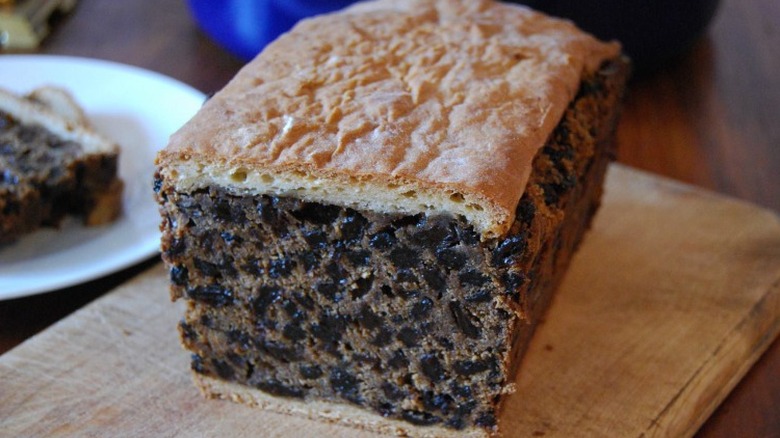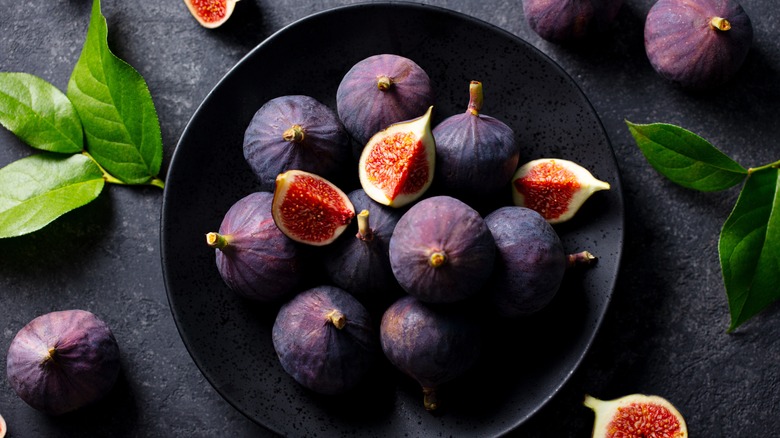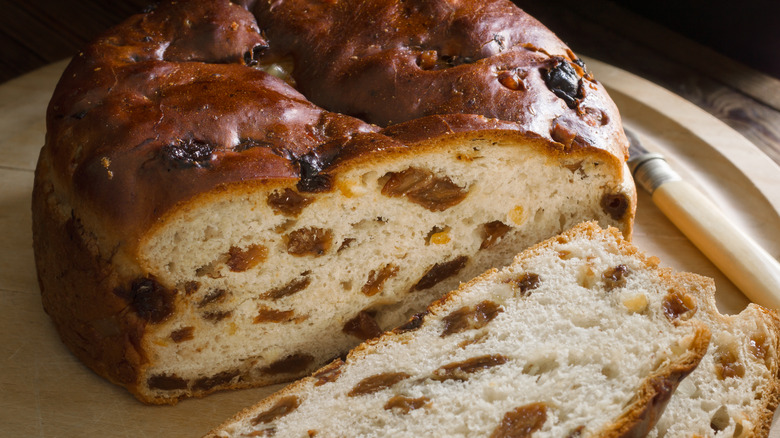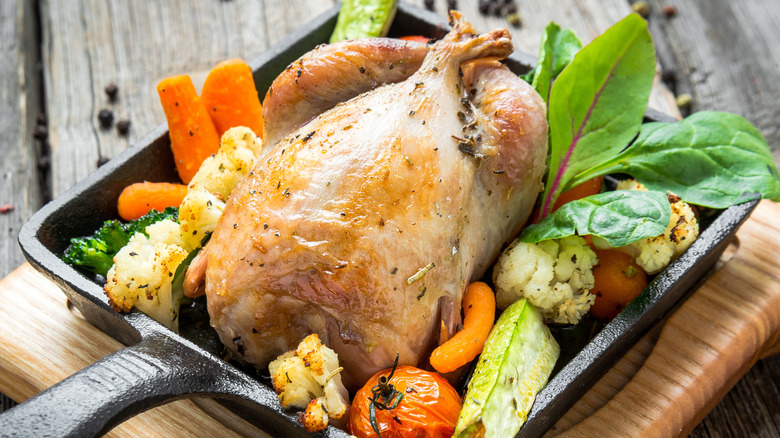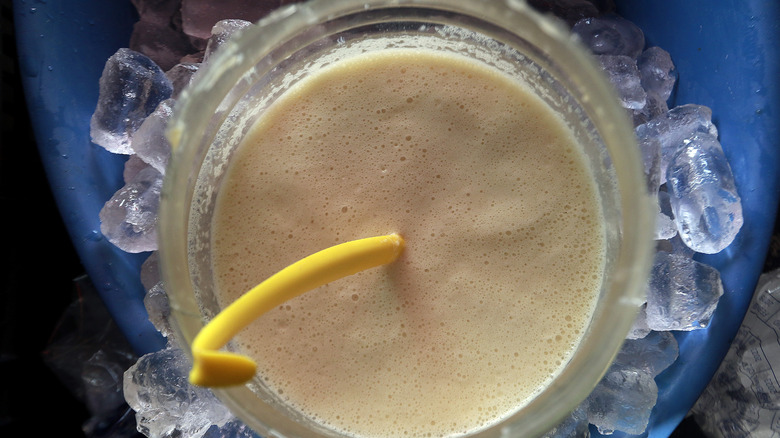7 New Year's Food Traditions We No Longer Celebrate
When the New Year rolls around, we get our drink on; we get our eat on. It might not surprise you that this tradition stretches back through recorded history and many different cultures. Basically, we humans like a party, and the New Year is a great reason to throw it down.
Over the years, however, our New Year's foods and drinks have changed. Typically, these changes have reflected our shifting tastes over the millennia. For example, the Ancient Aztecs used to ring in the New Year with a fermented drink called pulque. The Aztecs might have called it "the drink of the gods," but its yogurt-like texture would probably be a hard sell at your typical New Year's Eve party.
The funny thing about discussing "traditions that we no longer celebrate" is that they will inevitably get revived. Pulque, for example, was declared culturally irrelevant in the mid-2000s, but more recently, it's seen a hipster-fueled resurgence, albeit a niche one. So with the revival of these traditions probably just around the corner, we should take a look at some old New Year's food traditions that we no longer celebrate.
First footing with black bun and a hot pint
Before those pesky Romans came to spread Christianity across Northern Europe, people living there practiced pagan rituals to celebrate the New Year, and one of those rituals was Hogmanay. This celebration involved people going door to door after midnight to visit one another. As part big of Hogmanay, "first footing" refers to the first foot to cross your threshold in the New Year. To be clear, the first footing is not as common as it used to be, but it can still be found in Scotland and a few other British places.
A first footer is expected to bring a gift that ensures prosperity for the year, and the traditional food gift is a fruit cake wrapped in pastry called a black bun (via The Sunday Post). Made in a large loaf pan, the typical black bun is filled with raisins, currants, and spices like allspice, ginger, cinnamon, and nutmeg. Baking a black bun causes the outside to become a flakey pastry while the inside condenses to form a sticky solid closer to candy than pie filling (via Wisegeek).
Of course, you would need something to wash down the gooey insides of a black bun, and a hot pint — or het pint — fits the bill nicely. Traditionally carried in a copper kettle, a hot pint is made from warmed mild ale, nutmeg, two beaten eggs, a bit of cold ale, and a healthy dose of whiskey.
Holding a feast of Janus
Just like the App Store has an app for everything, mention something about Ancient Romans, and they probably had a god for that — including the New Year. Janus is a two-headed god from Roman mythology who oversaw transitions, and his name is derived from the Latin word for door, ianua (Latin used i's instead of j's). With his two heads, Janus could see both the past and the future. This made him the obvious god of the New Year; in fact, king Numa Pompilius added January as the first month of the Ancient Roman calendar during his rule in the 8th century BC. Starting in 153 BC, Roman officials marked the New Year with celebrations dedicated to Janus, and the typical food at these events included dates, figs, honey, and a cake called ianual (via ABC News Australia).
While a recipe for ianual hasn't survived to this day, similar celebratory cakes from ancient Rome were made with spelt flour (via Nova Roma). This grain is a subspecies of wheat with a distinctive hearty husk. It's become popular in recent years as a supposedly-healthier alternative to standard flour — though we're willing to bet that's not your first concern on New Year's night.
Wassaling
Wassailing is a medieval Anglo-Saxon tradition that has its origins in a toast given by the lord of a feudal manor: "waes hael" or "be well" (via Historic UK). Guests of the lord would respond by saying, "drink hael" or "drink well." The lord and his guests would toast with a drink of wine, ale, or cider spiced, sweetened with honey, and fortified with an egg or two. This medieval flip was held in a large communal bowl from which guests could take a ladle as it was passed.
While wealthier families could offer a bowl full of booze to their holiday guests, poorer families adopted a different wassailing tradition. They would fill an empty bowl with ribbons, go door-to-door singing traditional wassail songs, and ask for something to help fill up the bowl, like spiced alcohol, food, or money (via Yorkshire Museum).
If any of this sounds vaguely familiar, it should. Experts say wassailing evolved into carolin,g and you can hear evidence of that evolution in the song "We Wish You a Merry Christmas," with the lyrics: "Now give us some figgy pudding, and we won't go until we've got some." These days, if someone asks you for figgy pudding, you can always give them some figgy pudding Spam.
Throwing Irish bread at the door
Most New Year's traditions are focused on either bringing good luck or warding off bad luck for the coming year. In Ireland, one such tradition for warding off hunger in the New Year involved a bread called barmbrack. After the bread was baked, the man of the house would take three bites and throw it against the door to his home. Bits of smashed bread would then be collected and eaten by people living in the house (via Journal of the County Kildare Archaeological Society and Surrounding Districts).
Barmbrack is also associated with Samhain, the pagan predecessor to Halloween. Made with fermented ale, this bread was traditionally baked in the late autumn and early winter as a way to preserve fruits. Barmbrack is also known as an Irish fortune-telling bread. It's tradition to bake something inside a barmbrack in the same way that a small baby Jesus is baked into a king cake for Mardi Gras. However, any items baked into a barmbrack would supposedly foretell the future of whoever received them in their slice. A coin foretold financial wealth, a ring foretold getting married, and a small bit of cloth foretold bad luck.
Eating black puddings at the Feast of Fools
Immortalized in the 19th-century novel "The Hunchback of Notre Dame," the Feast of Fools was a massive celebration dedicated to turning power on its head. According to the book "Sacred Folly," the Feast of Fools originated in Northern France. On the first day of each year, high-ranking clergy members would turn over important duties to the lower-ranking members as an annual way of celebrating and uplifting "fools" (via Atlas Obscura). Over the years, the Feast of Fools became more of a debaucherous bacchanal than an elevation of low-level clergy.
Black puddings, or blood sausages, were the featured food of the Feats of Fools. Used by butchers to preserve meat scraps, edible organ meat, and blood, black puddings served to prolong the harvest bounty throughout the long winter months. White puddings and black puddings are similar to one another, but the former doesn't incorporate blood. Recently, a butcher in the United Kingdom used a black pudding to save his life — albeit not in the way you're probably thinking.
With the door to his walk-in meat freezer frozen shut and him inside, Christopher McCabe used a three-pound black pudding to smash his way to freedom. Black pudding used to be a totally different sign of power.
Vowing to be chivalrous, on a roasted bird
Famously written about by Charles Dickens in his Victorian periodical "All the Year Round," — medieval knights used to mark the New Year by renewing a vow to be chivalrous, taking that promise on a roasted peacock or pheasant (via Slate). According to Dickens, the ceremony started with the roasted bird being brought before the knights by a group of ladies. Each knight then took a turn making their vow over the bird. The bird was then expertly sliced and served to all in attendance. Dickens also noted that roasts of peacocks or pheasants were associated with knights and heartsick lovers.
You don't have to travel back to medieval times to have pheasant for dinner. They are available through specialty and farmers' markets. The bigger challenge is cooking pheasant properly. It's a pretty lean bird and prone to being overcooked. A good approach is to marinade or brine the pheasant before cooking it low and slow. Make a promise over it, or not. Just don't let a cooked bird go to waste.
Drinking pulque
The Aztecs held quite the New Year's ceremony, but you had to wait for it. Rather than marking the new year every 12 months, the Aztecs New Fire Ceremony was held every 52 years — or one full cycle of the Aztec solar year (via Journal of Verbal/Visual Enquiry). After the ceremony, it was traditional for the elites of Aztec society to consume pulque, an ancient agave drink made from funky fermented sap with a texture like spit (via World History Encyclopedia).
Pulque was highly regulated as an exclusive drink of the elite until the arrival of the Spanish. According to the New York Times, the fall of Aztec society led to the democratization of pulque, and an entire pulque industry thrived for hundreds of years. Being much more drinkable, beer eventually replaced pulque as the alcoholic drink of the masses in the 20th century, but that's not where this story ends.
Would trendy people try to bring back an ancient Aztec drink that was used to ring in the New Year? Of course, they would. In 2014, Punch reported on a pulque revolution in Mexico City. With the hip Expendio de Pulques Finos Los Insurgentes pulqueria as the driving force, this revolution reimagines pulque as a way to embrace a blue-collar Mexican ethos. More than a fresh year, it's a new era for this drink. Has it been 52 years already?

